Top Qs
Timeline
Chat
Perspective
Turing Award
American annual computer science prize From Wikipedia, the free encyclopedia
Remove ads
The ACM A. M. Turing Award is an annual prize given by the Association for Computing Machinery (ACM) for contributions of lasting and major technical importance to computer science. It is generally recognized as the highest distinction in the field of computer science and is often referred to as the "Nobel Prize of Computing". As of 2025[update], 79 people have been awarded the prize, with the most recent recipients being Andrew Barto and Richard S. Sutton, who won in 2024.[2][3][4][5][6]
Quick facts ACM Turing Award, Awarded for ...
| ACM Turing Award | |
|---|---|
 Statue of Alan Turing, the award's namesake | |
| Awarded for | Outstanding contributions in computer science |
| Country | United States |
| Presented by | Association for Computing Machinery |
| Reward | US$1,000,000[1] |
| First award | 1966; 59 years ago (1966) |
| Website | amturing |
Close
The award is named after Alan Turing, also referred as "Father of Computer Science", who was a British mathematician and reader in mathematics at the University of Manchester. Turing is often credited as being the founder of theoretical computer science and artificial intelligence,[7] and a key contributor to the Allied cryptanalysis of the Enigma cipher during World War II.[8] From 2007 to 2013, the award was accompanied by a prize of US$250,000, with financial support provided by Intel and Google.[2][9] Since 2014, the award has been accompanied by a prize of US$1 million, with financial support provided by Google.[1][10]
The first recipient, in 1966, was Alan Perlis. The youngest recipient was Donald Knuth, who won in 1974 at the age of 36,[11] while the oldest recipient was Alfred Aho, who won in 2020 at the age of 79.[12] Only three women have been awarded the prize: Frances Allen (in 2006),[13] Barbara Liskov (in 2008),[14] and Shafi Goldwasser (in 2012).[15]

Remove ads
Recipients
More information Year, Recipient(s) ...
| Year | Recipient(s) | Photo | Rationale | Affiliated institute(s) |
|---|---|---|---|---|
| 1966 | Alan Perlis |  |
"For his influence in the area of advanced computer programming techniques and compiler construction"[16][17] | Carnegie Mellon University |
| 1967 | Maurice Wilkes |  |
For contributions including being "the builder and designer of the EDSAC, the second computer with an internally stored program" and introducing program libraries (together with David Wheeler and Stanley Gill)[18][19] | University of Cambridge |
| 1968 | Richard Hamming |  |
"For his work on numerical methods, automatic coding systems, and error-detecting and error-correcting codes"[20][21] | University of Louisville Bell Labs |
| 1969 | Marvin Minsky |  |
"For his central role in creating, shaping, promoting, and advancing the field of artificial intelligence"[22][23] | Massachusetts Institute of Technology |
| 1970 | James H. Wilkinson |  |
"For his research in numerical analysis to facilitate the use of the high-speed digital computer, having received special recognition for his work in computations in linear algebra and 'backward' error analysis"[24][25] | National Physical Laboratory |
| 1971 | John McCarthy |  |
Award citation refers to McCarthy's lecture "The Present State of Research on Artificial Intelligence"[26][27] | Stanford University |
| 1972 | Edsger W. Dijkstra |  |
"For fundamental contributions to programming as a high, intellectual challenge; for eloquent insistence and practical demonstration that programs should be composed correctly, not just debugged into correctness; for illuminating perception of problems at the foundations of program design"[28][29] | Centrum Wiskunde & Informatica Eindhoven University of Technology University of Texas at Austin |
| 1973 | Charles Bachman | 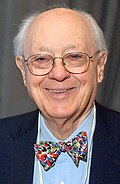 |
"For his outstanding contributions to database technology"[30][31] | General Electric Research Laboratory (now under Groupe Bull, an Atos company) |
| 1974 | Donald Knuth |  |
"For his major contributions to the analysis of algorithms and the design of programming languages, and in particular for his contributions to 'The Art of Computer Programming' through his well-known books in a continuous series by this title"[32][33] | California Institute of Technology Center for Communications Research, Center for Communications and Computing, Institute for Defense Analyses Stanford University |
| 1975 | Allen Newell |  |
In collaboration with J. C. Shaw and others, for "basic contributions to artificial intelligence, the psychology of human cognition, and list processing."[34][35][36] | RAND Corporation Carnegie Mellon University |
| Herbert A. Simon | ||||
| 1976 | Michael O. Rabin |  |
"For their joint paper 'Finite Automata and Their Decision Problem',[37] which introduced the idea of nondeterministic machines"[38][39][40][41] | Princeton University |
| Dana Scott |  |
University of Chicago | ||
| 1977 | John Backus |  |
"For profound, influential, and lasting contributions to the design of practical high-level programming systems, notably through his work on FORTRAN, and for seminal publication of formal procedures for the specification of programming languages"[42][43] | IBM |
| 1978 | Robert W. Floyd |  |
"For having a clear influence on methodologies for the creation of efficient and reliable software, and for helping to found the following important subfields of computer science: the theory of parsing, the semantics of programming languages, automatic program verification, automatic program synthesis, and analysis of algorithms"[44][45] | Carnegie Mellon University Stanford University |
| 1979 | Kenneth E. Iverson |  |
"For his pioneering effort in programming languages and mathematical notation resulting in what the computing field now knows as APL, for his contributions to the implementation of interactive systems, to educational uses of APL, and to programming language theory and practice"[46][47] | IBM |
| 1980 | Tony Hoare | 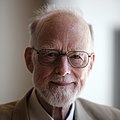 |
"For his fundamental contributions to the definition and design of programming languages"[48][49] | Queen's University Belfast University of Oxford |
| 1981 | Edgar F. Codd |  |
"For his fundamental and continuing contributions to the theory and practice of database management systems"[50][51] | IBM |
| 1982 | Stephen Cook |  |
For "his advancement of our understanding of the complexity of computation in a significant and profound way"; the citation in particular mentions his paper "The Complexity of Theorem Proving Procedures," which is credited with founding the theory of NP-completeness[52][53] | University of Toronto |
| 1983 | Dennis Ritchie |  |
"For their development of generic operating systems theory and specifically for the implementation of the UNIX operating system"[54][55] | Bell Labs |
| Ken Thompson |  | |||
| 1984 | Niklaus Wirth |  |
"For developing a sequence of innovative computer languages, EULER, ALGOL-W, MODULA and PASCAL"[56] | Stanford University University of Zurich ETH Zurich |
| 1985 | Richard M. Karp |  |
"For his continuing contributions to the theory of algorithms including the development of efficient algorithms for network flow and other combinatorial optimization problems, the identification of polynomial-time computability with the intuitive notion of algorithmic efficiency, and, most notably, contributions to the theory of NP-completeness"[57] | University of California, Berkeley |
| 1986 | John Hopcroft |  |
"For fundamental achievements in the design and analysis of algorithms and data structures"[58][59] | Cornell University |
| Robert Tarjan |  |
Stanford University Cornell University University of California, Berkeley Princeton University | ||
| 1987 | John Cocke |  |
"For significant contributions in the design and theory of compilers, the architecture of large systems and the development of reduced instruction set computers (RISC); for discovering and systematizing many fundamental transformations now used in optimizing compilers including reduction of operator strength, elimination of common subexpressions, register allocation, constant propagation, and dead code elimination"[60] | IBM |
| 1988 | Ivan Sutherland |  |
"For his pioneering and visionary contributions to computer graphics, starting with Sketchpad, and continuing after"[61] | Stanford University Harvard University University of Utah California Institute of Technology |
| 1989 | William Kahan |  |
"For his fundamental contributions to numerical analysis" and as "one of the foremost experts on floating-point computations"[62] | University of California, Berkeley |
| 1990 | Fernando J. Corbató |  |
"For his pioneering work organizing the concepts and leading the development of the general-purpose, large-scale, time-sharing and resource-sharing computer systems, CTSS and Multics"[63] | Massachusetts Institute of Technology |
| 1991 | Robin Milner |  |
The award citation mentions three primary contributions: his mechanization of the Logic of Computable Functions; the programming language ML including its type inference and type safety; the calculus of communicating systems; as well as the connection between operational and denotational semantics[64][65] | Stanford University University of Edinburgh |
| 1992 | Butler Lampson |  |
"For contributions to the development of distributed, personal computing environments and the technology for their implementation: workstations, networks, operating systems, programming systems, displays, security and document publishing"[66] | PARC DEC |
| 1993 | Juris Hartmanis |  |
"In recognition of their seminal paper[67] which established the foundations for the field of computational complexity theory"[68][69][70] | General Electric Research Laboratory (now under Groupe Bull, an Atos company) |
| Richard E. Stearns |  | |||
| 1994 | Edward Feigenbaum |  |
"For pioneering the design and construction of large scale artificial intelligence systems, demonstrating the practical importance and potential commercial impact of artificial intelligence technology"[71][72][73] | Stanford University |
| Raj Reddy |  |
Stanford University Carnegie Mellon University | ||
| 1995 | Manuel Blum |  |
"In recognition of his contributions to the foundations of computational complexity theory and its application to cryptography and program checking"[74] | University of California, Berkeley |
| 1996 | Amir Pnueli |  |
"For seminal work introducing temporal logic into computing science and for outstanding contributions to program and system verification"[75] | Stanford University Tel Aviv University Weizmann Institute of Science Courant Institute of Mathematical Sciences |
| 1997 | Douglas Engelbart |  |
"For an inspiring vision of the future of interactive computing and the invention of key technologies to help realize this vision"[76] | SRI International Tymshare McDonnell Douglas Bootstrap Institute/Alliance,[77] The Doug Engelbart Institute |
| 1998 | Jim Gray |  |
"For seminal contributions to database and transaction processing research and technical leadership in system implementation"[78] | IBM Microsoft |
| 1999 | Fred Brooks |  |
"For landmark contributions to computer architecture, operating systems, and software engineering"[79] | IBM University of North Carolina at Chapel Hill |
| 2000 | Andrew Yao |  |
"In recognition of his fundamental contributions to the theory of computation, including the complexity-based theory of pseudorandom number generation, cryptography, and communication complexity"[80] | Stanford University University of California, Berkeley Princeton University |
| 2001 | Ole-Johan Dahl |  |
"For ideas fundamental to the emergence of object-oriented programming, through their design of the programming languages Simula I and Simula 67"[81][82] | Norwegian Computing Center University of Oslo |
| Kristen Nygaard | 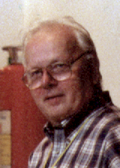 | |||
| 2002 | Leonard Adleman |  |
"For their ingenious contribution for making public-key cryptography useful in practice"[83][84][85] | University of Southern California |
| Ron Rivest |  |
Massachusetts Institute of Technology | ||
| Adi Shamir |  | |||
| 2003 | Alan Kay |  |
"For pioneering many of the ideas at the root of contemporary object-oriented programming languages, leading the team that developed Smalltalk, and for fundamental contributions to personal computing"[86] | University of Utah PARC Stanford University Atari Apple ATG Walt Disney Imagineering Viewpoints Research Institute HP Labs |
| 2004 | Vint Cerf |  |
"For pioneering work on internetworking, including the design and implementation of the Internet's basic communications protocols, TCP/IP, and for inspired leadership in networking"[87][88] | University of California, Los Angeles Stanford University, DARPA MCI (now under Verizon) CNRI, Google |
| Bob Kahn |  |
Massachusetts Institute of Technology Bolt Beranek and Newman DARPA CNRI | ||
| 2005 | Peter Naur | 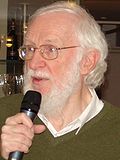 |
"For fundamental contributions to programming language design and the definition of ALGOL 60, to compiler design, and to the art and practice of computer programming"[89] | Regnecentralen (now under Fujitsu) University of Copenhagen |
| 2006 | Frances Allen | 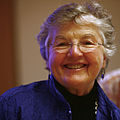 |
"For pioneering contributions to the theory and practice of optimizing compiler techniques that laid the foundation for modern optimizing compilers and automatic parallel execution"[90] | IBM |
| 2007 | Edmund M. Clarke |  |
"For their role in developing Model-Checking into a highly effective verification technology that is widely adopted in the hardware and software industries"[91][92][93][94] | Harvard University Carnegie Mellon University |
| E. Allen Emerson |  |
Harvard University University of Texas at Austin | ||
| Joseph Sifakis |  |
French National Centre for Scientific Research | ||
| 2008 | Barbara Liskov |  |
"For contributions to practical and theoretical foundations of programming language and system design, especially related to data abstraction, fault tolerance, and distributed computing"[14] | Massachusetts Institute of Technology |
| 2009 | Charles P. Thacker |  |
"For the pioneering design and realization of the first modern personal computer — the Alto at Xerox PARC — and seminal inventions and contributions to local area networks (including the Ethernet), multiprocessor workstations, snooping cache coherence protocols, and tablet personal computers"[95] | PARC DEC Microsoft Research |
| 2010 | Leslie Valiant |  |
"For transformative contributions to the theory of computation, including the theory of probably approximately correct (PAC) learning, the complexity of enumeration and of algebraic computation, and the theory of parallel and distributed computing"[96] | Harvard University |
| 2011 | Judea Pearl |  |
"For fundamental contributions to artificial intelligence through the development of a calculus for probabilistic and causal reasoning"[97][98] | University of California, Los Angeles New Jersey Institute of Technology |
| 2012 | Shafi Goldwasser |  |
"For transformative work that laid the complexity-theoretic foundations for the science of cryptography, and in the process pioneered new methods for efficient verification of mathematical proofs in complexity theory"[15][99][100] | Massachusetts Institute of Technology Weizmann Institute of Science |
| Silvio Micali |  |
Massachusetts Institute of Technology | ||
| 2013 | Leslie Lamport |  |
"For fundamental contributions to the theory and practice of distributed and concurrent systems, notably the invention of concepts such as causality and logical clocks, safety and liveness, replicated state machines, and sequential consistency"[101][102][103] | Massachusetts Computer Associates (now under Essig PLM) SRI International DEC Compaq (now under HP) Microsoft Research |
| 2014 | Michael Stonebraker |  |
"For fundamental contributions to the concepts and practices underlying modern database systems"[104][105] | University of California, Berkeley Massachusetts Institute of Technology |
| 2015 | Whitfield Diffie |  |
"For inventing and promulgating both asymmetric public-key cryptography, including its application to digital signatures, and a practical cryptographic key-exchange method[106][107][108] | Stanford University |
| Martin Hellman |  | |||
| 2016 | Tim Berners-Lee |  |
"For inventing the World Wide Web, the first web browser, and the fundamental protocols and algorithms allowing the Web to scale"[109] | CERN Massachusetts Institute of Technology World Wide Web Consortium |
| 2017 | John L. Hennessy |  |
"For pioneering a systematic, quantitative approach to the design and evaluation of computer architectures with enduring impact on the microprocessor industry"[110][111][112] | Stanford University |
| David Patterson |  |
University of California, Berkeley | ||
| 2018 | Yoshua Bengio |  |
"For conceptual and engineering breakthroughs that have made deep neural networks a critical component of computing"[113][114][115][116] | Université de Montréal, McGill University, Mila |
| Geoffrey Hinton |  |
University of Toronto University of California, San Diego Carnegie Mellon University University College London University of Edinburgh Google AI | ||
| Yann LeCun |  |
University of Toronto Bell Labs Courant Institute of Mathematical Sciences, New York University Meta AI | ||
| 2019 | Edwin Catmull |  |
"For fundamental contributions to 3D computer graphics, and the impact of computer-generated imagery (CGI) in filmmaking and other applications"[117][118][119] | University of Utah Pixar Walt Disney Animation Studios |
| Pat Hanrahan |  |
Pixar Princeton University Stanford University | ||
| 2020 | Alfred Aho |  |
"For fundamental algorithms and theory underlying programming language implementation and for synthesizing these results and those of others in their highly influential books, which educated generations of computer scientists"[120][121][122] | Bell Labs Columbia University |
| Jeffrey Ullman |  |
Bell Labs Princeton University Stanford University | ||
| 2021 | Jack Dongarra |  |
"For pioneering contributions to numerical algorithms and libraries that enabled high performance computational software to keep pace with exponential hardware improvements for over four decades"[123][124] | Argonne National Laboratory Oak Ridge National Laboratory University of Manchester Texas A&M University Institute for Advanced Study University of Tennessee Rice University |
| 2022 | Robert Metcalfe |  |
"For the invention, standardization, and commercialization of Ethernet"[125] | Massachusetts Institute of Technology, Harvard University, Xerox PARC, University of Texas at Austin |
| 2023 | Avi Wigderson | 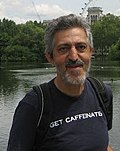 |
"For foundational contributions to the theory of computation, including reshaping our understanding of the role of randomness in computation and mathematics, and for his decades of intellectual leadership in theoretical computer science"[126][127] | Institute for Advanced Study, Princeton University, Hebrew University of Jerusalem |
| 2024 | Andrew Barto |  |
"For developing the conceptual and algorithmic foundations of reinforcement learning"[3][128][129] | University of Massachusetts Amherst |
| Richard S. Sutton |  |
University of Alberta Amii | ||
Close
Remove ads
See also
References
Further reading
External links
Wikiwand - on
Seamless Wikipedia browsing. On steroids.
Remove ads
Remove ads

